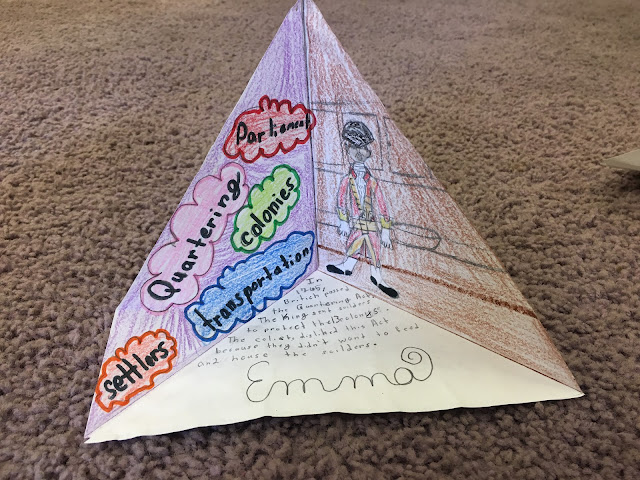The first "battle" of the Revolution occurs on a small green in the town of Lexington. In true hands-on style, we took to the "field" and had a mock paper wad battle.
After taking a close look at the beginning skirmishes at Lexington and Concord, I had the students research the top ten most noted/important battles of the Revolution.
Students worked with their partners to collect data on who were the leaders involved for both the British and American forces, where and when the battle occurred, the force number/casualties/captured, and the outcome of the battle.
Then students worked together to write a five sentence summary that should include who, did what, where, when, why and then 4 sentences of HOW (First, Next, Then, Finally).
After their research and summary, the students worked in pairs to create a battle plan of their specific battle. They could make up their own or research online and find the actual battle map layout of what happened. The final battle plan needed to include their summary, the casualties/generals/prisoners for each side, and the title.
OH, the Humanities! ... the adventures of a middle school humanities teacher ...
Wednesday, June 14, 2017
Summary Reflection Shelves
Summarizing seems to be one the hardest skills for 5th graders to grasp or is it just my kiddos!? so I incorporate it often into social studies. In this lesson, the students work as a group or in partners to CLOSE read one of the major events that led to the Revolution (Boston Tea Party, Boston Massacre, Stamp Act, Quartering Act, Proclamation of 1763) then pull out key vocabulary words and use those words to create a summary of the event.
Once they have established a written summary, students than create their own, independent "shelf" out of paper.
I have them add 5 vocabulary words to one triangle (I tell them to think of words that a 3rd or 4th grader might not know because you always have those couple kiddos who "know all of these words, they aren't even hard." grrrr....ha!)
In the second box, they illustrate the event or create a symbol to represent what they summarized. Finally, the third triangle should include their final summary.
I really like how these turn out, and I like the independent reflection the students have to put into of the historical event. I find that it helps them remember it better. They could be used for anything - reflecting on a reading story, historical event, scientific discovery/method, etc.
Subscribe to:
Posts (Atom)















